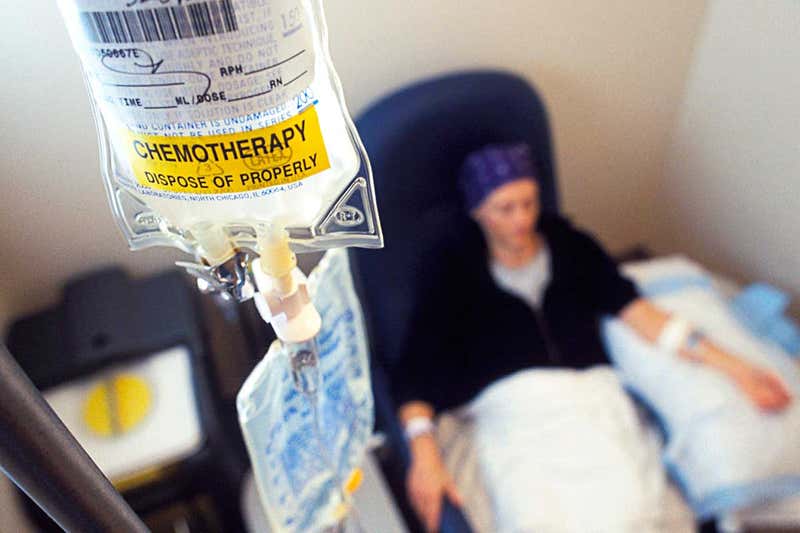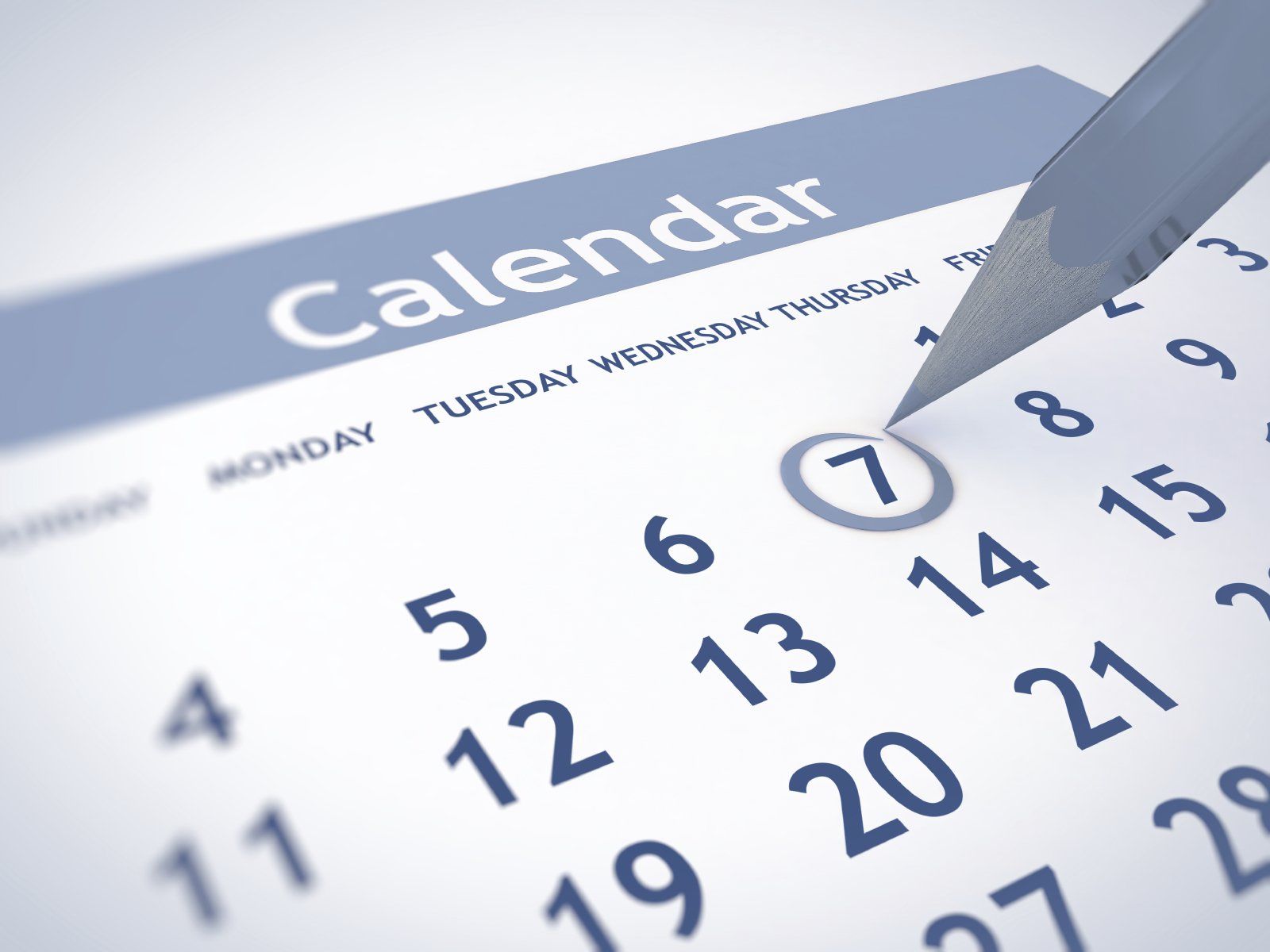Getting a good night's sleep
JoAnne Epping-Jordan • December 6, 2018
In a recent blog post, I wrote about the importance of sleep. I touched on some of the compelling evidence about its effects on mood, concentration, and a range of physical conditions. I also wrote about the tendency for people to tell themselves that they can get by with six or fewer hours of sleep. According to sleep researchers, the vast majority of these people are kidding themselves. Their caffeine dependence, afternoon sleepiness, difficulty staying focused and marathon sleep catch-up sessions reveal the truth about their true sleep needs.
I hope that my last post convinced you to take sleep seriously. Today, I provide some tips for getting a good night’s sleep.
- Cut out caffeine 10 hours before bedtime. When you enjoy a cup of coffee or other caffeinated drink, it takes about five to seven hours to eliminate half the caffeine from your body. After eight to 10 hours, around 75% of the caffeine is gone. For most people, a cup of coffee or two in the morning won't interfere with sleep at night. But a mid-afternoon pick-me-up is a different story.
- Limit alcohol. A drink before bedtime might help you fall asleep, but it will disrupt your sleep in the middle of the night. You might find yourself lying awake at 2AM, wondering what you did to deserve this sleeplessness. Chances are likely that your nightcap was at least partly to blame.
- Exercise during the day. Regular aerobic exercise leads to better sleep quality, researchers have found. But be careful about exercising too late in the day. Some (but not all) people find evening exercise makes it difficult to get to sleep.
- Create an evening ritual for relaxing before bedtime. My ritual involves drinking herbal tea. Other people listen to music or take a bath. Find a way to involve your senses in the process of relaxing, whether it be taste (tea), hearing (music), touch (a hot bath) or something else.
- Go to bed at the same time each night and get up at the same time each morning. This teaches your body a predictable rhythm for sleeping and waking. It is important to keep to the same schedule even if you didn’t get a good night’s sleep. Oversleeping or daytime napping to compensate for insomnia the night before only fuels the problem.
- Make your bedroom a relaxing and comfortable place. Do not bring work into the bed with you.
This is only a partial list. If you have recurrent insomnia, you probably will need to take additional measures. I list a few resources below.
Sleep well!
Additional resources on getting a good night's sleep:

Spouses or other loved ones of people who have cancer face their own set of demands. Yet these challenges are often ignored or disregarded in the wake of the multiple stressors faced by patients themselves. Spouses face a unique set of concerns. This can include the burden of becoming the sole breadwinner for the family, balancing their own work demands with the patient’s increased needs, dealing with the concerns of children, and coming to terms with the possibility their spouse might die and they will be alone. Often, cancer treatment can lead patients to be less interested in sex, which can cause additional stress in the relationship. A common problem is spouses “putting on a brave face” despite these stressors. They might assume that they need to appear strong and in control for their loved one who is sick. Or, they might think that their feelings or concerns are unimportant in comparison to the person who has cancer. This can lead to impaired communication in the couple, and increasing resentment in the spouse. The truth is that sadness, fear, and anger are a normal part of the cancer experience - for both patients and spouses. It is not necessary for spouses to ‘stay positive’ and in fact, many with cancer find it invalidating or tone-deaf when their partners respond in this way. The key to successfully navigating cancer is to communicate openly within the couple. This involves each person allowing and making room for the other’s thoughts and feelings. And recognizing that the suffering of the person with cancer does not invalidate the suffering of the spouse. American Cancer Society Stanford Medicine

You have cancer, and you are worried about losing your hair. Rest assured, you are not alone. A recent scientific review found that hair loss was consistently rated as one of the most distressing aspects of cancer treatment. Health-care providers, who are focused on treating the cancer itself, often underestimate the psychological impacts. Patients can be left feeling that they are being silly for worrying about something as trivial as their appearance. There is nothing silly or strange about dreading hair loss. Our hair is a key aspect of our identity and the way we communicate that self-concept to the world. A glance at someone’s hairstyle helps us understand whether that person is classical or edgy, carefree or meticulous, young or old, healthy or sick. We tend to associate a full head of hair with youth, health, and vibrancy. It’s perhaps not surprising then that people who lose their hair – for any reason – are often concerned about their attractiveness. People who lose their hair due to chemotherapy share those concerns and in addition, feel freakish or the center of attention if appearing in public without some sort of coverage. “I don’t want people to pity me,” is another comment I hear frequently about why people elect to wear hair pieces, wigs, or scarves. Even just looking in the mirror is a continual reminder of the cancer. Hair loss due to chemotherapy isn’t limited to the scalp. Depending on the specific medications used, chemotherapy also can result in losing your eyebrows, eyelashes, and pubic hair. Hair loss in these body areas can be more devastating to people than simply losing the scalp hair. So what can you do? The good news is that you get to decide the response that suits your personality and priorities. In my career, I have seen a wide range of responses: from labor-intensive cold caps (or scalp cooling) to minimize hair loss, head shaving in advance of/or at first signs of hair falling out, use of wigs, hats and/or scarves, and my personal favorite: rocking baldness with bad-ass earrings and a moto jacket. (Don’t forget sunscreen if you opt to go au naturel.) Eyebrows and eyelashes can be approximated with pencils and falsies – or not. It’s really up to you. The point is that you can – and should - continue to claim and express your identity even as you lose your hair. In time, your hair will start growing again. It might not look the same as before. For most people, this is temporary, and their usual color and texture return in time. This period is another opportunity to express yourself or maybe try something new. Some people decide that they like wearing their hair short, and they continue with this style even though they had long hair in the past. Others experiment with fun colors like pink, blue, or green while their hair is in the early grow-out stages. Once again, there is no right or wrong – it’s your body, and it’s your choice. American Cancer Society Mayo Clinic

As we approach the mid-point of 2020, I wonder what else might happen in this already calamitous year. Who would have thought as we rang in 2020 that it would bring a global pandemic, the end of our day-to-day lives as we knew them, massive unemployment, countless lives lost and many more disabled from COVID-19 complications, American culture wars and political dysfunction, unthinkable brutality and abuse of power captured for the world to see, and now protests around the world against systemic racism and police violence. I am exhausted just thinking about all of it. It’s no wonder that stress and anxiety are at record levels. But it’s not just that … many people are also feeling depressed and hopeless. No doubt you have already been flooded with self-help tips for coping with the stress of everything. In my view, taking care of your body is fundamental to everything else you might try. That means regular physical activity, healthy food choices, and sufficient sleep (at least 7-8 hours for most people). My next major piece of advice is to keep a regular schedule. Set regular bedtimes and get out of bed at around the same time every day. If you are working from home, create designated workspaces and dress for the workday as though you were still going into the office. Beyond this, it is helpful to find ways to incorporate relaxation, social connection, and moments of fun and lightness into your routine. And although the world might be turned upside down, flowers are still blooming, baby birds are hatching and fledging, and sunrises and sunsets are as beautiful as ever. Seek opportunities to ground yourself into the rhythms of nature that remain unchanged.

Increasingly, college-educated elite are valuing their work as the centerpiece of their identities and life purpose. Beyond being seen as a source of income, Americans are turning to their work as the main source of what makes their lived meaningful. They worship at the altars of their desks, seeking transcendence through their career accomplishments.

It’s February. How are you doing with the New Year’s resolutions you made this year? Despite our good intentions, most of us (around 8 in 10) will have already abandoned whatever we resolved to do differently in the New Year. Why do we fail? In a nutshell, it's because we don't have a real plan. Most of us do not define what we really want to accomplish in clear, measurable terms. On top of this, most of us don't know how we will get there. We haven't thought about how we will deal with challenges or barriers to meeting our goals, or on the other hand, how we can reorganize things in our lives to make it easier to keep our resolutions. Fear not: help is available. One of the best sources for clear, concise guidance is a book written by my colleagues, Sheri Pruitt and Josh Klapow. Living SMART: Five Essential Skills to Change Your Health Habits Forever is focused on health behavior like losing weight, or stopping smoking. But its core recommendations can be applied to any type of resolution that involves changing what you do on a daily basis. Living SMART uses the acronym S-M-A-R-T to describe the skills needed for success. I have taken the liberty of summarizing each of the skills below. Setting a goal involves translating a general health goal to a target behavior. For example, “I need to relax” could be translated into “I will practice relaxation exercises for 10 minutes, three times per day, and five days per week.” One key aspect of goal setting, according to this approach, is to start with a target that is small and achievable, and then build slowly on success. Monitoring progress is perhaps the most overlooked component of success. Self-monitoring, using a simple chart, can be used to track virtually anything you do, including exercising, eating, spending money, etc. Research has shown that self-monitoring has an impact, in and of itself, on the target action. Watching progress visually on a chart becomes a type of reward in itself. Arranging the environment for success means modifying the home or work environment to encourage new habits that you want to cultivate, and/or to discourage old habits that you want to decrease or eliminate altogether. For example, if you want to stop drinking sodas, remove these drinks from the home refrigerator and storage pantries. Or alternatively, if you want to walk more frequently, place walking shoes at the front door as a reminder. The possibilities for arranging the environment are almost endless and require simply thinking about ways in which your desired actions can be prompted while undesired actions can be made more difficult. Recruiting a support team involves seeking the positive influence of family, friends, and others to help meet your goals. Identify buddies or peers, meaning people who who want to achieve similar goals, to provide camaraderie along the way. Supporters, meaning people who are not necessarily making changes themselves but who agree to support your efforts, also can be helpful. Treating oneself involves setting rewards for meeting your desired goals. Rewards should be decided in advance, and should occur frequently at the beginning. They don’t need to be large or expensive - bubble baths or watching a favorite show are examples of small treats that can be used. Over time, feelings of accomplishment and satisfaction often become rewarding in themselves. This is a quick summary only. Sheri and Josh's book goes into much greater detail about each of these skills and how to apply them. I encourage you to read it in order to learn more about these concepts. The research is clear: if you want to keep your resolution, you need a real plan. Your plan must define your target behavior in clear terms, include how you will change your surroundings to encourage your resolution, involve the support of others, allow you to self-monitor your progress, and reward your actions along the way.

Today I am writing about how to communicate effectively with your doctor* (*which could mean your physician, nurse practitioner, or anyone else you are seeing for medical advice and help). Too many patients and too little time Today’s doctors are in a big hurry. In many cases, doctors are contractually bound to limit the amount of time they spend with each patient (typically ranging from 10 to 15 minutes) for the purpose of meeting total caseload quotas. Doctors who do not see the number of contractually stipulated patients can be penalized financially or in other ways. Although this system has been criticized heavily from all sides (not least of all, by the doctors themselves), it is the reality under which many health care providers are now seeing patients. Get clear in your own mind If you have only 10-15 minutes with your doctor, you need to be thoughtful and organized about your time. You also need to realize that it is as much—or arguably more—your job, as opposed to your doctor’s job, to ensure that you get what you need from your appointment. You must plan in advance. First, define what you really want from the appointment. If you are seeing your doctor for a rash, for example, you might want to know whether it’s contagious; or alternatively, you might want a prescription to stop the itching; or maybe you really just want piece of mind that it’s not bed bugs from your recent trip to Paris. The point is: get clear in your own mind what will make the appointment a ‘success’ for you. Write it down It never fails to amaze me how often smart, capable people fail to go to their doctor with a written list of issues and questions. (They also fail to bring pen and paper or any type of a recording device, to take note of what is discussed and recommended. But that is a different topic.) With a written list, you will be less likely to become distracted and more likely to get what you want from the appointment. Communicate succinctly and effectively Once you are clear about why you are at the doctor’s office, communicate your goals clearly and repeatedly, before and during your appointment. The essential formula is: “I am here for X issue or problem, and I would like your help via Y action.” Tell the medical assistant or nurse who brings you into the exam room, and repeat it to the doctor. If you plan in advance, it should take you no more than 10 seconds to communicate this information. For example: “I am here today about this rash. I would like to know if it’s contagious.” Or, “I have been more short of breath lately, and I’d like the doctor to go over my medications and see if there is anything else that can be done to address my asthma.” Practice in advance. Dealing with multiple issues in one visit If you have multiple issues you want to address within a single appointment, you might consider starting by saying something like, “I have four things on my list to discuss with you. I am not sure you will have time for all of them. The things I want to cover, in my personal order of priority, are a) a new rash on my chest, b) my ongoing knee pain, c) my ongoing neck pain, and d) new shortness of breath since yesterday.” Be realistic You must be realistic about what can be covered within the allotted time. If you don’t know how much time is available for your appointment, ask in advance or while there. Prioritize your list and if necessary, schedule a follow-up appointment to deal with topics that could not be covered fully. In some cases, your priorities will not match the priorities of your doctor. For example, it is highly likely that any doctor hearing the list outlined in the scenario above would deal first and foremost with your new shortness of breath. That’s because shortness of breath is potentially a life-threatening condition and might indicate a major medical event in progress, such as a heart attack or a blood clot. In situations like these, you need to trust that your doctor is using his/her expertise to reprioritize your list for your overall health. Finally, it is important to understand that competent doctors practice within the scope of evidence-based medicine, even if that means denying you something you think you want. Good-quality doctors, for example, will not prescribe an advanced imaging test for acute, uncomplicated low back pain, nor will they prescribe an antibiotic for a presumably viral infection. They should, however, explain to you the reasons why this is the case. *** In summary, getting what you want from your doctor’s visit is up to you. Plan in advance, write it down, and communicate clearly. Resources Before Your Appointment: Questions Are the Answer. Agency for Healthcare Research and Quality. http://www.ahrq.gov/patients-consumers/patient-involvement/ask-your-doctor/questions-before-appointment.html How Can You Get the Most Out of Your Doctor's Appointment? Center for Advancing Health. http://www.cfah.org/prepared-patient/communicate-with-your-doctors/getting-the-most-out-of-doctors-appointment

Pain is an inevitable part of the human condition. And for many of us, pain becomes chronic at various points in our lives. When pain is chronic, we often create an inner dialogue about what we are experiencing. “I am so out of shape, it’s no wonder I threw out my back.” “Maybe something is really wrong that the doctors have missed.” “I don’t know how much more of this pain I can take.” Emotions also are often overlaid onto pain. Sadness, fear, and my specialty, anger, are common responses. So pain becomes more than pain. It turns into the sensory experience plus the running inner dialogue plus the negative emotions. No wonder we find it so exhausting! What is the solution? In the words of Jon Kabat-Zinn, founder of the Mindfulness Based Stress Reduction program, you need to “put out the welcome mat” for your pain. Not because you’re masochistic, but because your pain is already there. You might not like your pain, but learning to accept its presence (because it’s already there) is the first step in disentangling your sensory experience from all the negative thoughts and emotions. Try this. The next time you have pain, find a quiet place to sit or lie for a few minutes. Take a few breaths to center yourself and quiet your mind. Next, turn your attention to the area of your body where you are experiencing the pain. As objectively as possible, observe the pain you are experiencing. First, try to identify its precise location. Where exactly in your body do you feel the pain? Zoom your attention to its center. Next, try to identify its borders. Where does the boundary lie between pain and no pain? Does this boundary change with time? After you have located your pain, turn your attention to its qualities. Is it dull or sharp? Steady or throbbing? Do its qualities change over time? Go inside your pain. Observe it moment by moment, staying non-judgmental all the while. Think of yourself as a scientist or an explorer of the inner world of your pain. Stay with your pain for a few minutes more, observing its location and qualities as they unfold over time. You will probably find that your pain is not static, but rather dynamic, transforming in character and intensity even within the few minutes of this exercise. According to Jon Kabat-Zinn, if you move into pure awareness in the midst of pain, even for the tiniest moment, your relationship with your pain is going to shift right in that very moment. By seeing the pain for what it really is, stripped of the negative thoughts and feelings that usually accompany it, it becomes immediately more manageable, more livable. The sensory experience of pain might still be present, but the suffering is diminished. Directing conscious attention towards softening and releasing the area of pain (even by the tiniest fraction) in these moments often brings additional benefits. Some people resist trying this exercise. The notion of paying attention to the very thing that causes them so much suffering seems overwhelming at first. This response is understandable: humans have a natural tendency to push away from their pain. This exercise, in contrast, calls for the exact opposite response. It invites people to get close to your pain, indeed, to inhabit their pain and recognize it for its true nature in that moment. What does the evidence say? A recent study found that participants in a single session of a mindfulness-based body scan reported less pain related distress and less interference of pain on social relations, compared with matched controls who did not participate. A different systematic review of the effects of Mindfulness Based Stress Reduction interventions on chronic low back pain revealed similar and interesting results. Pain intensity did not decrease consistently as a result of the interventions, but pain acceptance did. My reading of this evidence is that exercises similar to that described above do not necessarily reduce pain, but they do help people suffer less. In the words of the Dalai Lama, "Pain is inevitable, suffering is optional."




